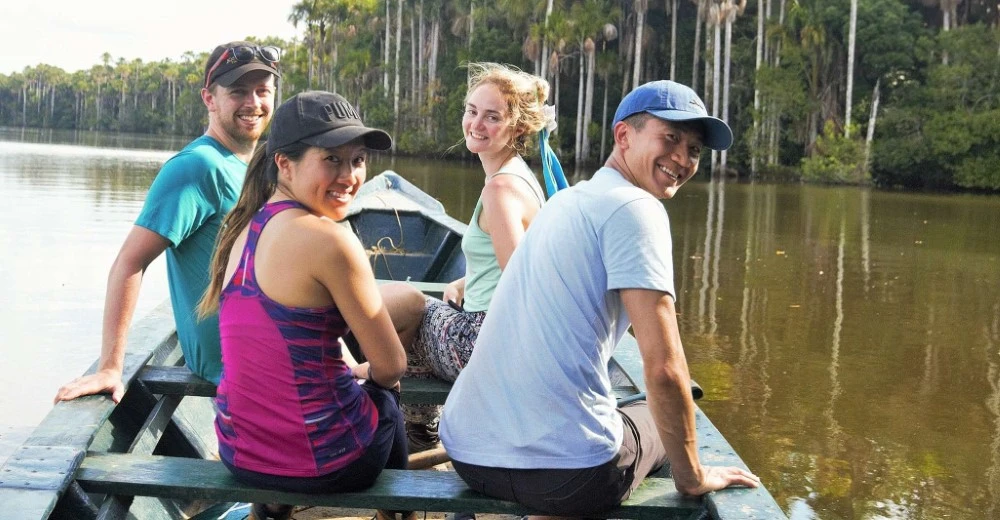Visiting the Tambopata National Reserve in November is ideal for those looking to capture the authentic essence of the Peruvian rainforest, just as the rainy season begins and nature comes to life with greater intensity. November marks the start of the rainy season in Tambopata, which enhances both the vegetation and wildlife activity. For example, many migratory bird species arrive during this period, and macaws return en masse to feed on clay at the clay licks as they nest. Tambopata is home to over 600 bird species and 100 species of mammals, so visitors often spot toucans, hummingbirds, caimans, and howler monkeys.
In November, the Tambopata National Reserve offers lush landscapes and highly active wildlife, which is a great advantage for photographers. However, it also presents challenges such as heavy rains and muddy trails. Below, we explain all the advantages and disadvantages, as well as the activities, climate, tips, and more information so you’re well prepared for your trip.

Advantages of visiting Tambopata National Reserve in November
- Flora and landscapes: November rains soak the rainforest, making it incredibly green and full of life. Puddles and streams multiply, creating perfect reflections for nature photography.
- Abundance of birds: During the rainy season, migratory birds arrive along with many endemic species. At clay licks (like the famous Collpa de Chuncho), thousands of macaws and parrots feed, offering a colorful spectacle for photographers.
- More visible wildlife: Many animals take advantage of the increase in water and food. Reptiles, amphibians, and mammals such as sloths, monkeys, tapirs, or jaguars may be easier to observe.
- Less tourism and tranquility: November is before the high season, so trails and tours are less crowded. This allows you to enjoy nature more peacefully and capture photos without crowds.
- Rivers with higher flow: With the rains increasing, rivers rise and boat rides become faster and more accessible, allowing more exploration of the reserve.
- Photography opportunities: The jungle offers soft light and drama from passing rains, ideal for artistic photography. Taking pictures of parrots and macaws among the greenery, or caimans swimming in murky waters, are iconic shots of this season.
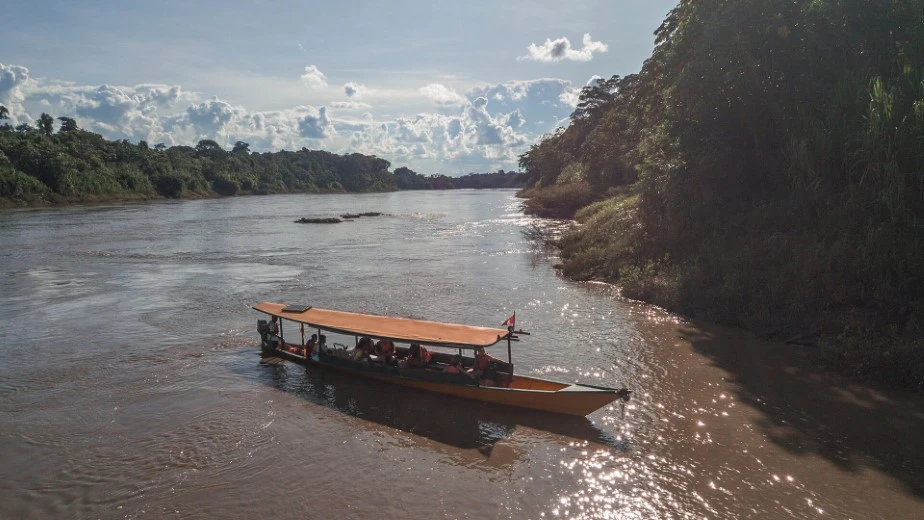
Disadvantages of visiting Tambopata National Reserve in November
- Frequent rains: November marks the start of the rainy season. Heavy downpours are common and can interrupt excursions and photography.
- Uncomfortable humid conditions: The very high humidity can be unpleasant and may affect camera equipment. Trails become muddy and slippery.
- More mosquitoes and health risks: The humidity and heat favor the appearance of mosquitoes, so you must protect yourself and consider vaccines and strong repellent.
- Fewer sunlight hours and variable light: There are fewer hours of clear daylight, which complicates natural light photography.
- Logistical unpredictability: Some excursions or routes may be canceled or modified due to extreme weather conditions.
Activities you can do in Tambopata National Reserve in November
- Monkey Island: Observation of various monkey species in the reserve.
- Jungle walk: Guided exploration of the rainforest with medicinal plants, ancient trees, and wildlife.
- Night boat ride: Search for nocturnal animals along the river.
- Lake Sandoval: Walk along a wooden trail and boat ride to see giant otters, caimans, herons, monkeys, and more.
- Matsigenka cultural visit: Learn local customs such as cotton spinning, archery, and fire starting with natural materials.
- La Cachuela parrot nest: Early morning observation of parrots on the river cliffs.
- Local farm visit: Learn about grafting, Amazonian soils, and taste local products.
- Walk to the giant tree: Visit a tree over 700 years old.
- Hanging bridges: View canopy wildlife like toucans, hummingbirds, and orchids.
- Sport fishing (optional): Catch Amazonian species such as piranhas, catfish, and freshwater stingrays.
- Chuncho clay lick: Watch macaws and parrots at the largest clay lick, with picnic breakfast included.
- Birdwatching tower: Panoramic view and observation of exotic birds.
- Yacumama lake exploration: Sunset boat ride with sightings of otters, caimans, birds, and possible piranha photography fishing.
- Night wildlife walk: Search for sloths, reptiles, opossums, owls, and nocturnal insects under flashlight.
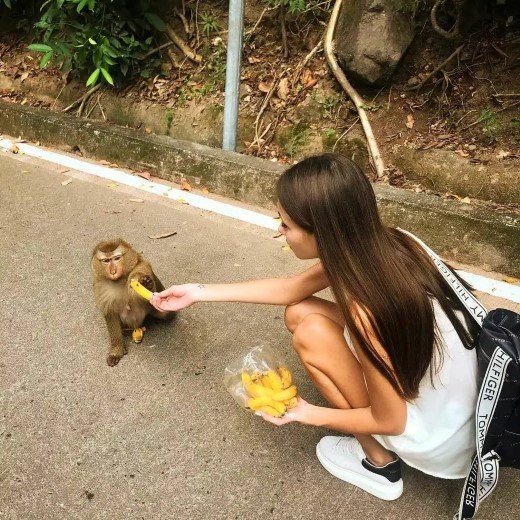
Weather in Tambopata National Reserve in November
- Temperature: Between 73°F and 86°F (23°C to 30°C) during the day.
- Humidity: Around 82%, creating a high heat sensation.
- Rainfall: Frequent rains, with nearly 60% daily chance.
- Sunlight hours: Only 5 to 6 hours of sun per day.
- Rainy season: November is the official start of the rainy season, with higher rivers and more storms.
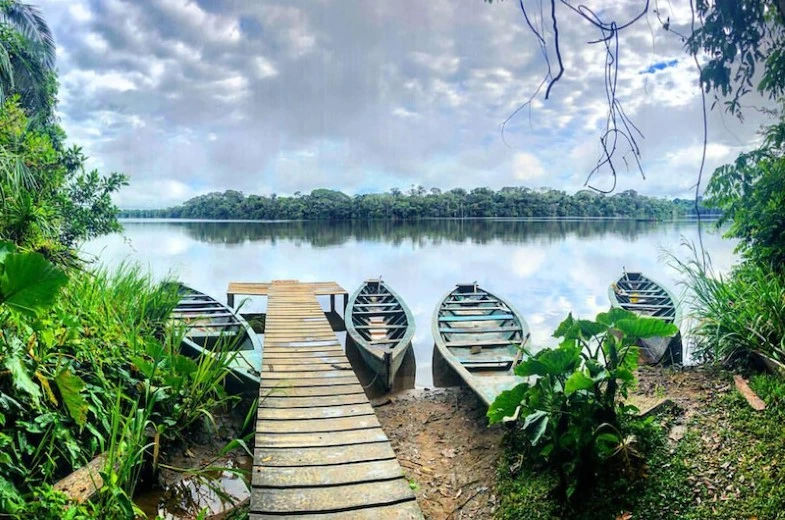
Travel tips for visiting Tambopata National Reserve in November
- Vaccines and health: It’s important to have the yellow fever vaccine and bring strong insect repellent.
- Appropriate clothing: Pack lightweight long-sleeve clothes, a raincoat or poncho, hat, sunscreen, and a flashlight.
- Footwear: Sturdy, preferably waterproof trekking boots.
- Photography gear: Camera with telephoto lens, binoculars, and moisture protection.
- Guides and reservations: Book with agencies experienced in nature and photography tours. Peru Jungle Trips is especially recommended for its photography and ecotourism focus.
- Planning: Book in advance, bring some cash, and check weather conditions before traveling.
Frequently Asked Questions about the Tambopata National Reserve in November
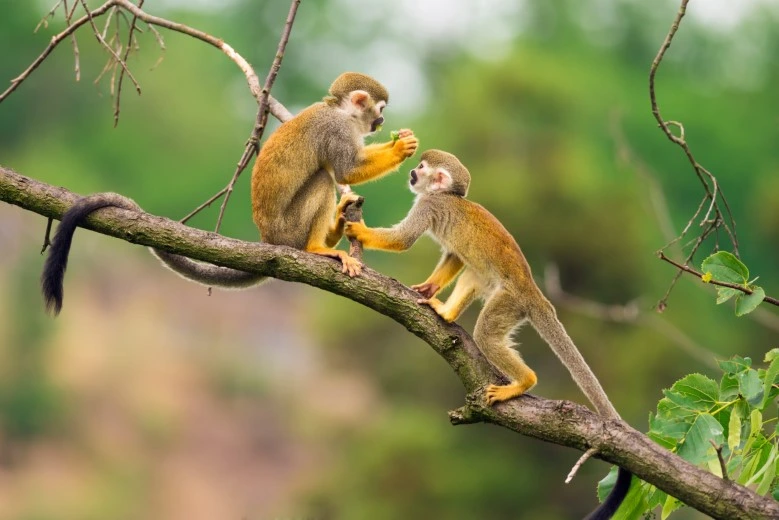
1. What wildlife can be photographed in Tambopata in November?
It’s common to spot sloths, howler monkeys, spider monkeys, tapirs, jaguars, poison frogs, caimans, snakes, and especially over 600 bird species. Macaws, toucans, parrots, and hummingbirds are abundant, and the clay licks offer spectacular photo opportunities.
2. What is the weather like in Tambopata and what should I bring in November?
The weather in November is hot and very humid, with frequent and intense rains typical of the season. It’s best to bring quick-dry clothing, a raincoat, insect repellent, closed anti-slip boots, sunscreen, a waterproof camera, and updated yellow fever vaccination.
3. What excursions or tours are recommended when visiting Tambopata National Reserve?
Visits to macaw clay licks, boat rides on Lake Sandoval, day and night walks, and canopy walks. Peru Jungle Trips is highly recommended for its photography and nature expertise, but other reliable agencies also offer quality services.
4. Is good physical condition necessary for a tour to Tambopata in November?
You don’t need to be athletic, but you should have basic stamina to walk on wet trails, handle intense humidity, and tropical heat. Agencies adjust the pace of activities based on group conditions, making the experience accessible to most people.
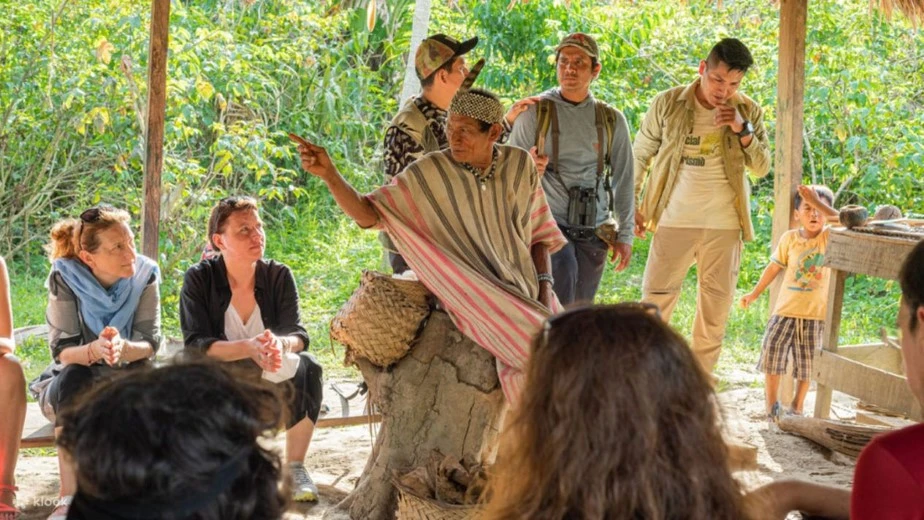
Visiting the Tambopata National Reserve in November offers a unique experience for photographers, with vibrant landscapes and active wildlife. While there are challenges like rains and insects, with proper preparation, your photographic tour can be an unforgettable adventure. Contact us and book your trip to Tambopata National Reserve.
Tours to Tambopata National Reserve
- Lake Sandoval (2 Days)
- Tambopata Jungle Tour (3 Days)
- Sandoval Lake + Parrot clay lick + Native Community (4 days)
- Collpa Chuncho Macaw Clay Lick + Sandoval Lake & Yacumama Lake (4 Days)
Related Articles About Tambopata National Reserve
- Tambopata National Reserve in October: Photography Tour to the Peruvian Rainforest
- Tambopata National Reserve in December: Pros and Cons of Visiting the Peruvian Jungle

